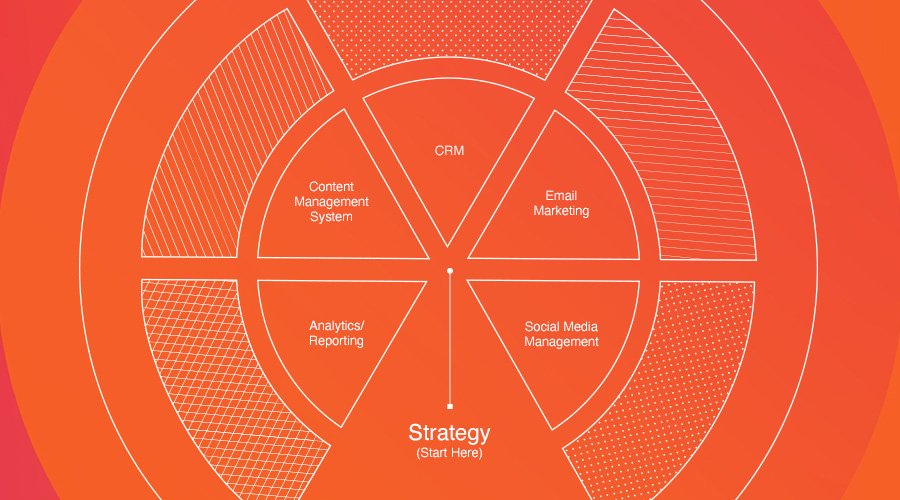Welcome to Simantel’s Mailbag, where agency owner and VP of Client Services, Tim Leesman, addresses questions we hear from our clients. In this edition, Tim discusses what happens when we see changes in leadership on the client site, what to consider when planning a lead generation strategy and how to rationalize the cost-value of your agency partner.
Have a question you’d like covered? Tweet it to us at @simantel and include #mailbag.
Q: My company recently re-organized and I now have new leadership in place. I’m afraid all the good work and momentum my team has built will be torn down in an effort to “go in an innovative new direction” based on the vision of our new leadership. How do I balance embracing and delivering on a new vision, yet staying true to the strategies and tactics that have proven to be very effective?
TL: It’s true, this does happen very often. That’s why transparency on both sides is absolutely key. Make every effort to have leadership quantify what an “innovative new direction” looks like. I’m talking big vision, timeframes, investments, KPI’s, structure, benchmark research, assessment of current state, etc.
If a new leader truly wants to advocate for their vision, they should be willing and able to articulate specific imperatives that you can then build on. I would also encourage you to do everything you can to truly articulate the value of past and current activities. Push them to spend time to really understand and appreciate the work – including the team and the partners behind those activities. They may be pleasantly surprised to find that your current approach is much more robust, effective and even more innovative than they realized. Show your leaderships why it’s a great platform to build from, rather than tear down.
But none of this can happen without transparency and having the confidence to engage them in meaningful dialogue, rather than simply asking for orders then trying to execute blindly.
Q: It seems every blog I read and every event or webinar I attend is talking about lead gen or demand gen. Do I really need it and if so, how do I weight the cost-value?
TL: The pressure on marketing teams to drive more leads is real. And the short answer is yes, you should be considering lead generation programs if you haven’t already. Lead gen or demand gen may seem like the latest trend or buzzword, but it’s not going away anytime soon. Marketing has always been about providing the sales teams with leads, it’s just the way we go about doing it continues to evolve over time.
We typically see two scenarios:
- Companies that are urgent to drive leads for the sake of driving leads. This is never good for anyone. These are the teams that are just interested in quantity of leads over quality. Sure, generating leads might be easy, but it’s generating the right leads that takes a sophisticated strategy. Often times, when we see this urgency from a client or prospect, there is not yet a strategy in place. And what we typically uncover is that there is no established lead management process. Make sure your business is operationally set up to manage a lead once it comes in. Simantel is not in the business of driving leads, we are in the business of improving customer experience, including what happens after a customer comes to your door.
- On the other end of the spectrum, we work with clients and prospects that are hesitant to step into the lead gen and analytics space. We often hear, “we’re just not there yet,” or “we can’t talk about it until next year.” We get it, it’s a large undertaking and can be overwhelming. And because each program needs to be unique to each client and their needs, this may seem like a significant amount of time and money. But believe us, it’s worth it. Just take a look at how our clients at Caterpillar Marine and Knapheide Manufacturing are successfully doing it. And remember, Rome wasn’t built in a day. You can start small, work in some A/B testing and build (or clean) your dataase to assure you are spending your time and money wisely.
So how do you know when it’s the right time? If you’re already working diligently on your brand and promotion and feel you have a good foundation to build on, now’s the time. And to demonstrate the cost-value, it’s important to set up your KPIs on the front end, set criteria for what justifies a marketing qualified lead (MQL) and track what’s happening with a lead and why. This way you can continue to communicate the value internally and optimize programs as you go.
Q: Beyond just driving leads, I really value all the guidance, consultation and support my agency provides throughout the year. But the cost for all of those hours is hard to rationalize at budgeting time. Am I getting the value for what I’m paying?
TL: Glad to hear the support is valued, but finding a way to manage your budget to accommodate can be tough. Here are a few tips to consider:
- Set aside a monthly “not to exceed” budget for agency consultation, support, planning and management. It may not be a sexy line-item, but anyone who’s done this for a while understands your overall success depends on the little things that happen behind the scenes on a daily basis. And the “not to exceed” approach will ensure you’re managing the expense versus being surprised at the tab you’ve racked up.
- When internal stakeholders are frustrated with the amount being spent, the root cause is typically a lack of clarity or communication. For example, we often experience a client initiating a project request before having everything scoped on their end; or having multiple people review and contribute to a PowerPoint deck the agency is creating without ensuring that all internal feedback is aggregated first. Most agencies bill hourly, so making sure to maximize time spent on your work will save a lot in the long run.
- Finally, make sure to empower your agency account manager to push back on you and engage in healthy debate. They can likely save you a lot of time and money if they know you want (and expect) them to challenge your thinking and maximize your budget. If you turn your agency partner into a production shop full of yes people, you won’t be happy with the results or money spent. Our most successful clients have an open and honest relationship with their core agency team.





